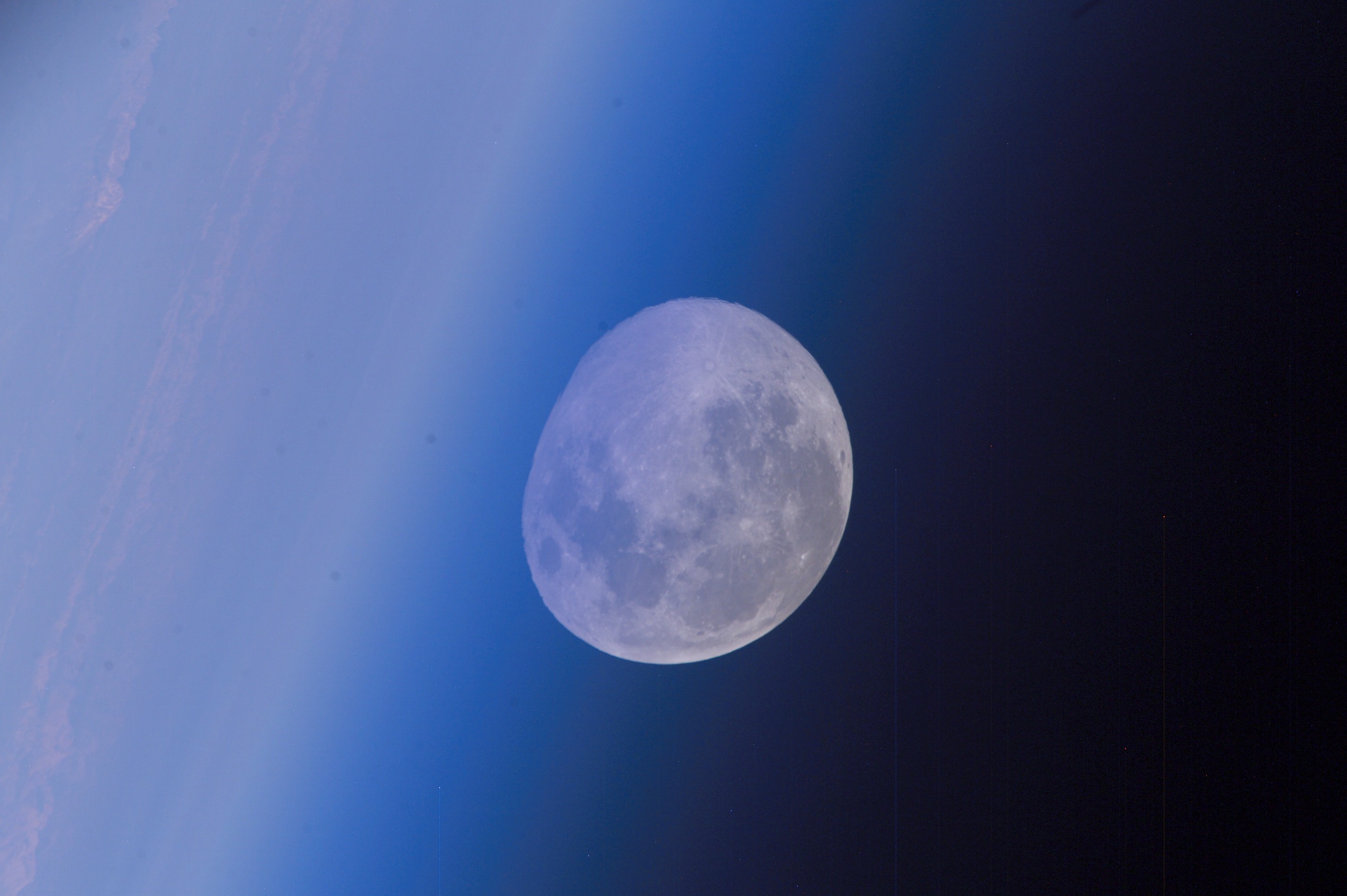Saturday's Blue Moon Is Also a Paschal Moon for Easter. Here's Why
The full moon shows up for a second time in March, on the 31st at 8:37 a.m. EDT. Whenever two full moons appear in one month, which happens about once every 2.66 years, the second is christened (by one definition) the "Blue Moon."
And yet, this is the second Blue Moon since the beginning of the year — the second time in three months that two full moons have occurred in a calendar month. What is the reason for this anomaly? The length of time for the moon to cycle from one full moon to the next (29.53 days, on average) is called a "synodic" month. February is the only calendar month that is shorter than a synodic month, and this year, it did not have a full moon. So, to make up for this lack, March ended up with an extra full moon. There were also two full moons in January, thus giving us two Blue Moons over just 60 days, though Saturday's Blue Moon will be the last one until 2020.
The mainstream media touted the January Blue Moon (on the 31st) as "rare" because it also passed directly through Earth's shadow, producing a total lunar eclipse. The last time such a circumstance occurred over North America was back in 1866 — 152 years ago! Of course, the appearance of the moon as it passed through Earth's shadow was hardly different from most of the other total lunar eclipses that have occurred in recent years. Thanks to atmospheric refraction, the moon morphed into a lovely coppery red color during the total phase, giving it the "blood moon" moniker. [In Photos: The Super Blue Blood Moon Eclipse of 2018]
Setting the date for Easter

Our March Blue Moon will also have something unusual associated with it: It will be a "Paschal" Moon.
Spring began on March 20, and 11 days later, the moon turns full. So this is also the first full moon of spring, and as such, it's designated as the Paschal Moon. The first Sunday after the Paschal Moon is usually designated as Easter Sunday, as will indeed be the case on the very next day, April 1.
But the ecclesiastical date assumed for the full moon may not coincide precisely with the astronomical one. So Easter, in practice, is determined from other formulas involving Epachs and Golden Numbers. These rules also state that the vernal equinox is fixed on March 21, even though, from Vatican City from 2008 through 2101, the equinox will occur no later than March 20. In 2038, Easter will be observed as late as it can possibly come, on April 25. The earliest date for Easter is March 22, which will not happen until 2285.
Blue Moon oddities
Get the Space.com Newsletter
Breaking space news, the latest updates on rocket launches, skywatching events and more!
![Thought to be called "blue" after an old english term meaning "betrayer," a Blue Moon is an extra full moon that occurs due to a quirk of the calendar. [See the full Blue Moon Infographic here.]](https://cdn.mos.cms.futurecdn.net/HHbm7kUWUR8zaAccXs7kqg.jpg)
A Paschal Moon that is also a Blue Moon can only occur in March.
The last time we had a Blue Paschal Moon was in 1999. In that year, that second March full moon fell on a Wednesday, so Easter Sunday fell on April 4. The next time we'll have a Paschal Blue Moon will be in 2037.
If you're wondering when the last time Easter Sunday fell on April 1 — that was in 1956.
But when did we have a case similar to this year, a Blue Paschal Moon on March 31, followed the very next day by Easter Sunday?
In 1714, the full moon was on March 31 at 3:17 Universal Time, followed the next day by Easter Sunday. But that was valid only for Europe and the Eastern Hemisphere. For the Western Hemisphere, the full moon occurred the day before (on March 30).
For North America, we must go back to the year 1646 to have a case that replicates this month: a Blue Paschal Moon on Saturday, March 31, which was followed by Easter Sunday the very next day.
Incidentally, we're fully aware that the original colonies were still following the Julian calendar, and not the current Gregorian calendar, which was first implemented by Pope Gregory in 1582. England and the American colonies did not make the switch until 1752, thereby throwing a monkey wrench into this particular Easter calculation, since it would throw everything off by 10 days.
So that would suggest that the upcoming circumstance of a Blue Paschal Moon immediately followed by Easter Sunday on April 1 is a truly unique occurrence!
And finally, our next Blue Moon will again coincide with a noteworthy day: Oct. 31 (Halloween) in 2020.
Why am I suddenly envisioning a blue-hued jack-o'-lantern?
Editor's note: If you capture an amazing photo of the Blue Moon or any other celestial sight and would like to share it with Space.com for a story or gallery, send images and comments to spacephotos@space.com.
Joe Rao serves as an instructor and guest lecturer at New York's Hayden Planetarium. He writes about astronomy for Natural History magazine, the Farmer's Almanac and other publications, and he is also an on-camera meteorologist for Fios1 News in Rye Brook, New York. Follow us at @Spacedotcom, Facebook or Google+. Originally published on Space.com.
Join our Space Forums to keep talking space on the latest missions, night sky and more! And if you have a news tip, correction or comment, let us know at: community@space.com.

Joe Rao is Space.com's skywatching columnist, as well as a veteran meteorologist and eclipse chaser who also serves as an instructor and guest lecturer at New York's Hayden Planetarium. He writes about astronomy for Natural History magazine, Sky & Telescope and other publications. Joe is an 8-time Emmy-nominated meteorologist who served the Putnam Valley region of New York for over 21 years. You can find him on Twitter and YouTube tracking lunar and solar eclipses, meteor showers and more. To find out Joe's latest project, visit him on Twitter.









